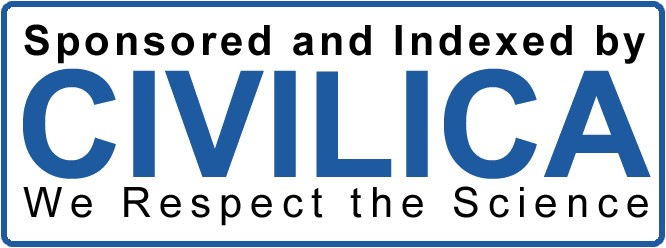A Jurisprudential and Legal Analysis of the Liability of the Agent in Genetic Manipulation of Embryos
Keywords:
Factors, Genetic manipulation, Flaws and defects, Fetus, Customary citationAbstract
Today, due to significant advances in science, particularly in the field of genetic engineering, some individuals have not limited their use of genetics merely to gene correction, disease treatment, and therapy. Instead, they have gone further, utilizing genetic science to make alterations to their embryos based on personal desires and preferences, such as changing eye color, enhancing memory, determining gender, and more. In many cases, genetic manipulation of the embryo does not lead to the desired or expected outcome for the parents, and may even result in adverse effects, causing defects or abnormalities in the embryo. This article, using the library research method and referencing legal sources and scholarly opinions, examines the factors involved in genetic manipulation of embryos and the liability arising from such actions. The summary of the research suggests that genetic specialists, gynecologists, and laboratory staff, when acting based on customary standards, are liable for any damage caused to the embryo and must compensate for the harm. It is noteworthy that due to customary reliance, their responsibility may sometimes be determined as joint liability due to direct involvement, stronger causality, or the participation of all contributing factors.
References
Allison, l. (2007). fundamental molecular biology. Wiley- black well.
Barikloo, A. (2010). Civil Liability. Tehran: Mizan Publishing, Shareholding Company.
Bojnourdi, M. H. (1998). Al-Qawa’id al-Fiqhiyya. Al-Hadi Publishing.
Buchana, A. (2010). From chance to choice genetics and justice New York: Cambridge university].
Cavzz, M. (2010). transfusion independence and hmg a2 ac tivation after gene therap of human ( bar) thalassaemia. Nature, 467(7313), 318-322. https://doi.org/10.1038/nature09328
Diogo, M. (2000). fication of acystic fibrosis plasmid vector forgene therapy unsing hydrophobic interaction chromate graphy. Biotech nol bioeng, 68(5), 576-578. https://doi.org/10.1002/(SICI)1097-0290(20000605)68:5<576::AID-BIT13>3.3.CO;2-X
Fazel Lankarani, M. J., & Mohammad Javad, S. (2009). Haq al-Ta’lif. Center for Jurisprudence of Ahlul Bayt.
Fotros, M. H. (2011). Principles and Foundations of Civil Liability Insurance. Hamedan: Bu Ali Sina University.
Ghasemzadeh, S. M. (1999). Foundations of Civil Liability. Tehran: Mizan Publishing.
Ghasemzadeh, S. M. (2011). Obligations and Civil Liability Without Contracts. Tehran: Mizan Publishing.
Hekmatnia, M. (2010). Civil Liability in Imamieh Jurisprudence: Foundations and Structure. Qom: Research Institute for Islamic Sciences and Culture.
Hosseini Nejad, H. G. (2010). Civil Liability. Tehran: Majd Publishing.
Imam Khomeini, S. R. (2000). Tahrir al-Wasila (Vol. 2). Institute for Compilation and Publication of Imam Khomeini’s Works.
Jafari Langaroudi, M. J. (2004). Legal Terminology. Tehran: Ketabkhaneh Ganji Danesh.
Jahangir, M. (2002). Civil Code. Tehran: Agah Publishing.
Jourdan, P. (2003). Principles of Civil Liability. Tehran: Mizan Publishing.
Katouzian, N. (1997). Non-Contractual Obligations. Tehran: Tehran University Press.
Katouzian, N. (2015). Legal Events: Civil Liability. Tehran: Shareholding Company Publishing.
Khoei, S. A. (1990). Takmilat al-Minhaj. Madinat al-Ilm.
Mohaghegh Ardabili, A. i. M., & Mojtaba, A. (1983). Majma’ al-Fa’ida wa al-Burhan fi Sharh Irshad al-Adhhan. Islamic Publications Office.
Mohaghegh Helli, J. i. H., & Abdul Hossein Mohammad Ali, B. (1988). Sharaye’ al-Islam fi Masa’il al-Halal wa al-Haram. Esmailian Publishing.
Najafi, M. H., Abbas, G., & Ali, A. (1984). Jawahir al-Kalam fi Sharh Sharaye’ al-Islam. Dar Ihya al-Turath al-Arabi.
Pelayo, F. G. (2014). Thepost-humanist embryo: genetic manipulation, assisted reproductive technologies and the principle of procreative beneficence. cuad bioet, 85, 427-444.
Rashti, H. Kitab al-Ghasb.
Vulescu, S. (2009). Gentic interventions and the ethics of enhancement of human beings. Read philosoph of tech, 16(1), 417-430. https://doi.org/10.1093/oxfordhb/9780199562411.003.0023
Downloads
Published
Submitted
Revised
Accepted
Issue
Section
License
Copyright (c) 2025 Fariba Taei (Author); Aliakbar Ezadifard (Corresponding author); Aliakbar Jahani (Author)

This work is licensed under a Creative Commons Attribution-NonCommercial 4.0 International License.








